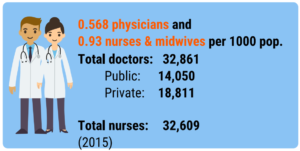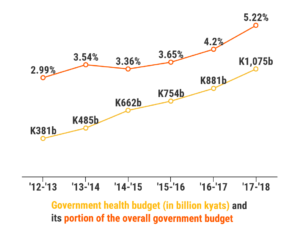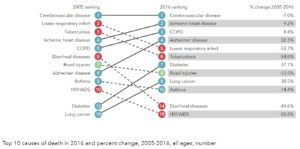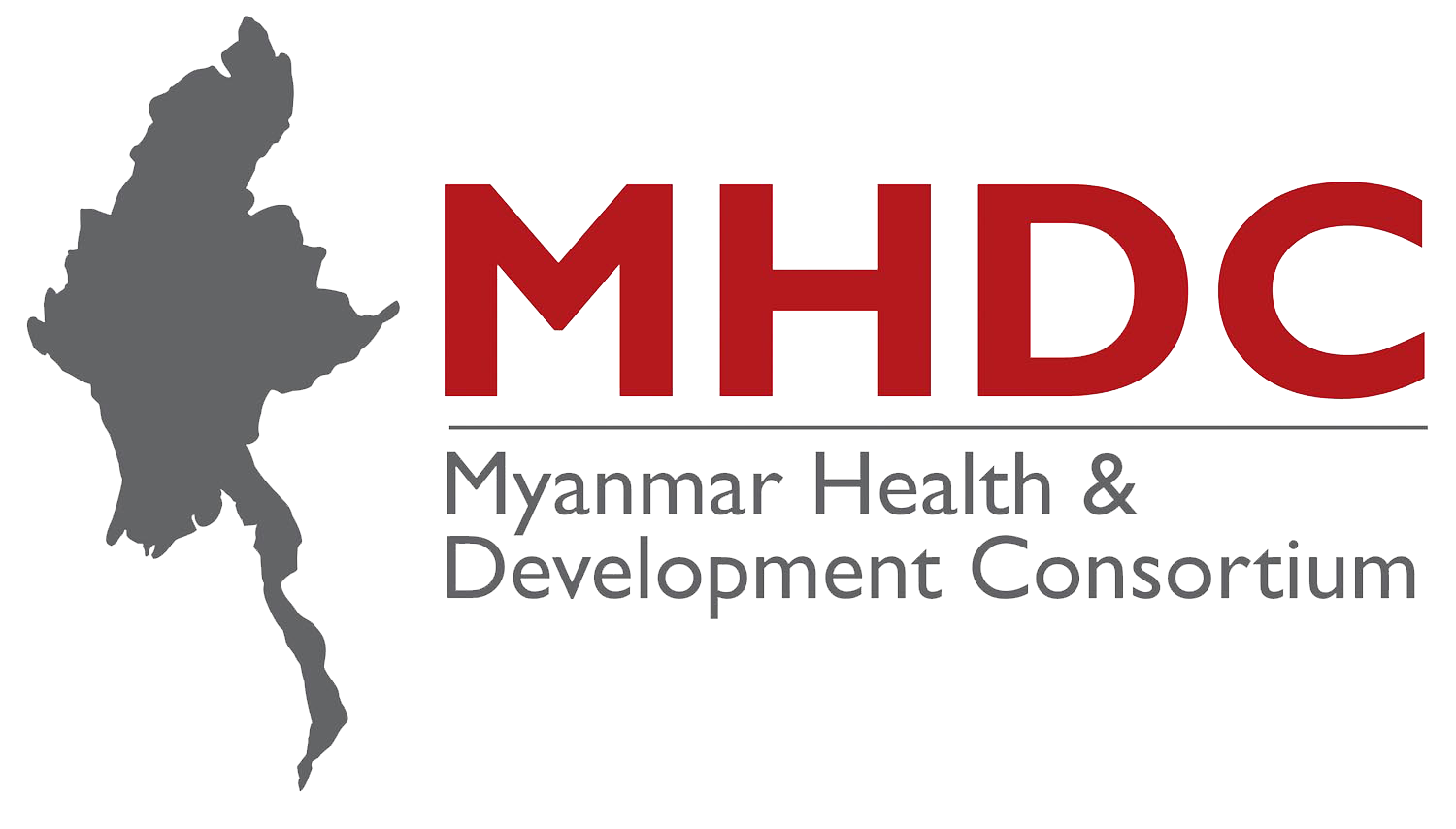Due to decades of neglect, Myanmar’s health system is weak and faces various challenges in meeting the health needs of the population. Myanmar has the lowest life expectancy at birth (at 66.61 years), and the second highest maternal mortality ratio (178 per 100,000 live births), under-five mortality (50.8 per 1,000 live births) and infant mortality rates (40.1 per 1,000 live births) in Southeast Asia / ASEAN member states. The health workforce (physicians, specialists, nurses, technicians, etc.) is also over-burdened and remains below optimal coverage ratios, negatively affecting service delivery and quality.

Since 2011, the government has increased investments in healthcare. Health systems are being strengthened with help from increased domestic financing and development partners, and the government plans to achieve universal health coverage (UHC) by 2030, as outlined in the National League for Democracy’s National Health Network’s “Programme of Health Reforms“.
Government health spending has grown from 0.2% of GDP in 2009 (the lowest in the world) to 1.17% in 2018. It also grew from 381 billion kyats (around 2.99% of the government budget) in Financial Year 2012-2013, to over 1 trillion kyats (and 5.22% of government budget) in Financial Year 2017-2018. The population is also now placing more emphasis on health, with health expenditure growing from 1.687% of GDP in 2011 to 4.95% in 2015.

Myanmar is also experiencing a double burden of both communicable and non-communicable diseases. While communicable diseases such as AIDS, tuberculosis, malaria and dengue continue to pose major public health challenges, non-communicable diseases now account for seven of the ten main causes of death, and are responsible for 68% of all deaths.

To realize one of the social objectives of “Uplifting health, fitness and education standards of the entire nation”, the Ministry of Health has laid down the following objectives.
